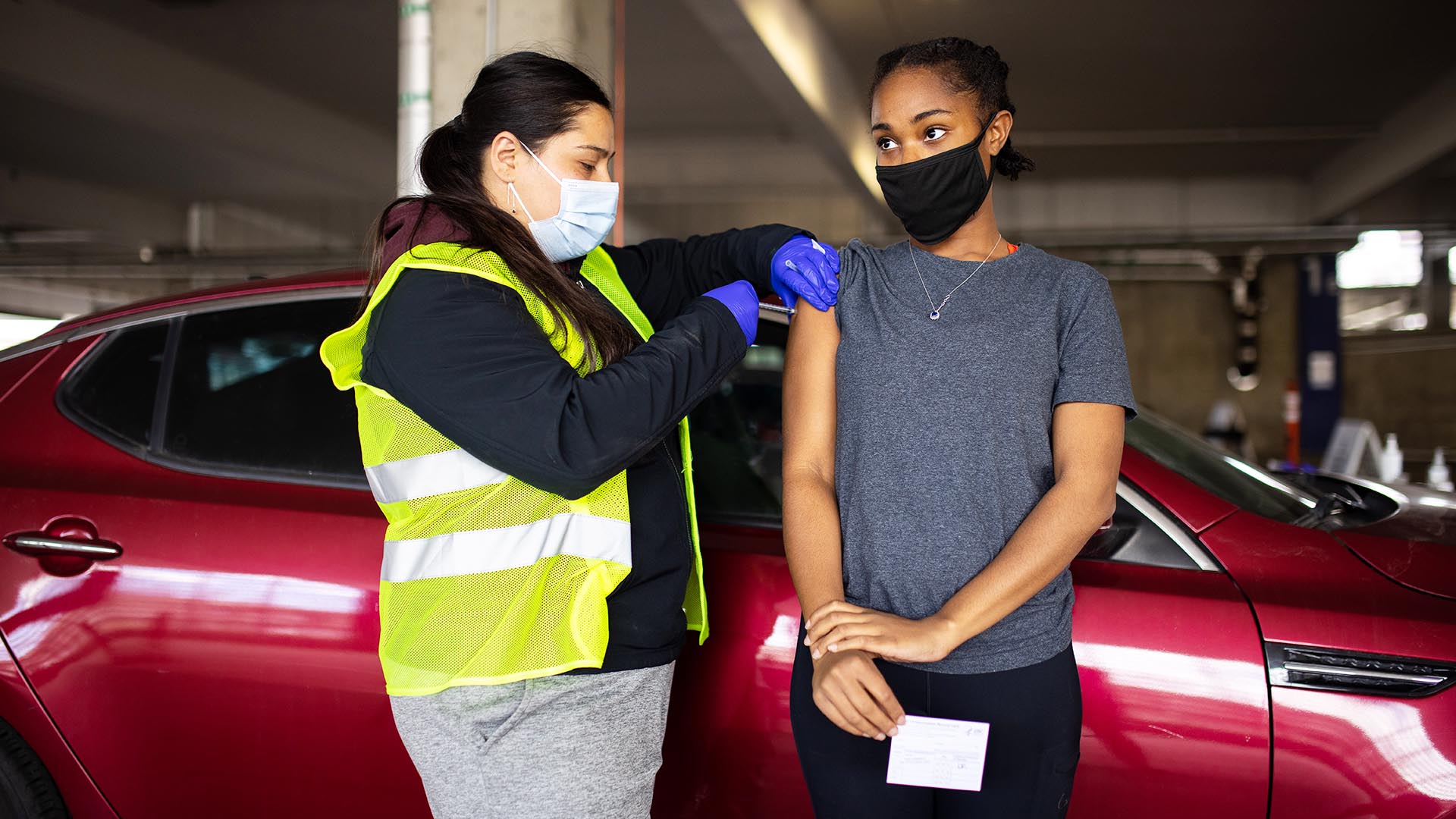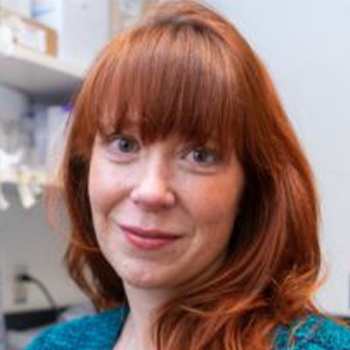Herd immunity explained
Ending the pandemic is contingent on our ability to achieve herd immunity through vaccination. Here are the science and math that get us there.

Here we go.
MSU Denver announced on Thursday that it would no longer require fully vaccinated faculty, staff and students to wear masks. The move follows Colorado’s lead on mask-shedding recommendations and updated guidelines from the Centers for Disease Control and Prevention stating that fully vaccinated people can safely gather without a mask in most outdoor and indoor locations. It also comes on the heels of the Food and Drug Administration’s recent emergency-use authorization of the Pfizer vaccine for children ages 12-15.
For many, the reopening-policy shifts at the state and local levels represent the beginnings of a return to pre-pandemic normalcy. And the changing guidelines are underscored by a big assumption: Colorado and the country are moving closer toward so-called herd immunity through vaccination or infection. But what is the science behind herd immunity, and what is the math required to achieve it?
The CDC uses the term “community immunity,” rather than herd immunity, which it defines as a situation in which a sufficient proportion of a population is immune to an infectious disease through vaccination and/or prior illness to make its spread from person to person unlikely.
The percentage of a population required to reach herd immunity varies with each disease, said Ruben Zorrilla, M.D., medical director of the Health Center at Auraria, a tri-institutional department that provides Medical Services and Mental Health Services for all students and members of faculty and staff at Metropolitan State University of Denver, the University of Colorado Denver and Community College of Denver. For Covid-19, the percentage of the population with immunity through vaccination and/or prior illness required to reach herd immunity is estimated between 70% and 80%.
As a starting point to understand how it works, Zorrilla suggested that Coloradans envision a herd of bison.
“The group senses danger and moves the most vulnerable to the center,” he said. “It’s a similar concept with Covid. Those of us who are vaccinated or have the antibodies protect the others from disease and death.”
One goal, two paths
There are two paths to herd immunity: vaccination and infection.
Because vaccines induce a protective immune response without causing the actual disease, they’re our safest and best weapon to limit the spread along our road out of the pandemic, said infectious-disease expert Sheryl Zajdowicz, Ph.D., professor and chair of MSU Denver’s Department of Biology.
Infection, on the other hand, presents a slew of negative outcomes for individuals and communities, including protracted transmissibility and “long-haul” Covid symptoms, Zorrilla said. Critically, mass infections also provide a scattershot data set to develop further scientific and policy responses to a disease.
Through vaccination, we are able to have a clearer picture of the rate of immunity and a better understanding of the immunity that has been conferred, Zajdowicz explained.
“We can also develop boosters to drive continued herd immunity as needed,” she said.
That’s because variants, which have been present since Covid’s beginning, can drive up the population percentages required for herd immunity, Zajdowicz said.
“In the case of any infectious disease that can cause severe symptoms, an ounce of prevention is worth a pound of cure,” she said.
Math matters
Achieving herd immunity is also a race against math, said Ben Dyhr, Ph.D., professor of Mathematics and Statistics at MSU Denver.
Statewide, data show a mixed bag, but one data set sticks out: Case rates are lowest where vaccination uptake is highest.
“You have competing elements,” Dyhr said. “In order to beat the virus, you have to starve it faster than it can spread. And we know that the slowing we’re seeing in many places is correlated with vaccine administration – that’s what’s happening, at least right now.”
The sharp upward and downward graphs of Covid-related data represent exponential growth and decay, he said. Linear change is a fixed numerical change over each equal time period, while “exponential” refers to a percentage rate of change with increasing differences over each fixed period.
This is because growth amounts increase (number of cases accelerates) in each unit of time for exponential growth. Decay amounts, expressed as negative numbers, also increase in each unit of time for exponential decay.
Dyhr described this as similar to the shape of a pipe organ, since pipe lengths for equal musical intervals also increase exponentially.
Following the numbers is a key strategy as campuses gear up for a full return to in-person operations this fall semester. The Health Center at Auraria has a two-pronged approach to this, said Executive Director Steve Monaco.
“Our goal as a campus community is to ensure the health and well-being of our constituents,” he said. “That requires us to both get as many people vaccinated as possible and have a regular testing strategy for those who aren’t vaccinated or showing symptoms.”
Epidemiologists increasingly agree that reaching herd immunity nationwide may be unlikely due to vaccine hesitancy and aversion; pockets of Covid outbreaks may occur across the country into the fall. However, Zorrilla said local communities such as those that compose the Auraria Campus can avoid becoming an outbreak site through high vaccination rates.
“Getting the vaccine as soon as you can allows us all to get back to enjoying our freedoms,” he said, “freedom from anxiety and freedom to live the lives we all want with our friends and family.”







